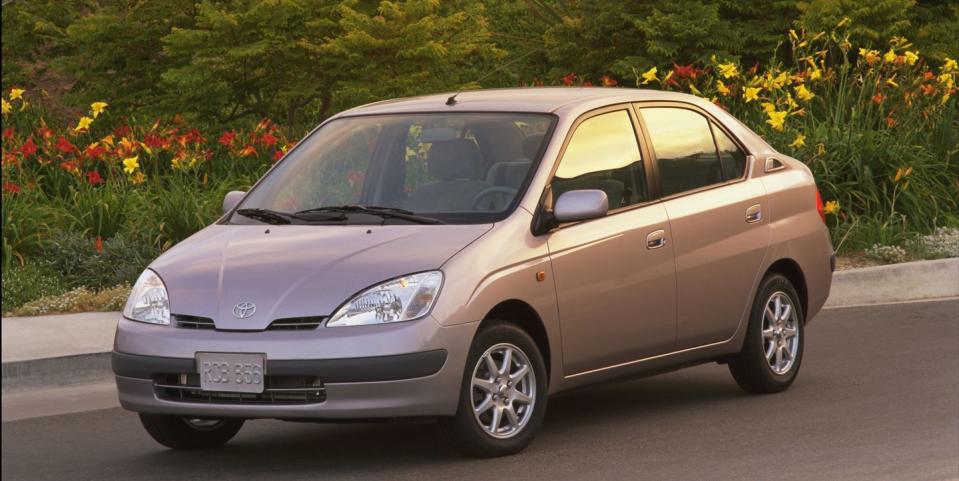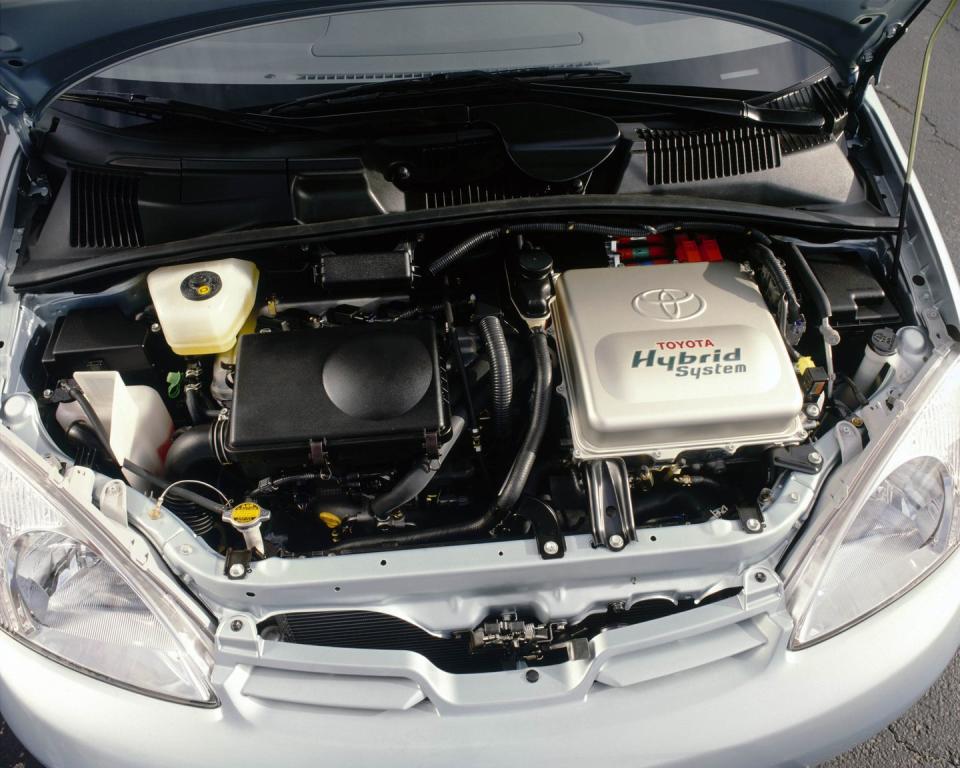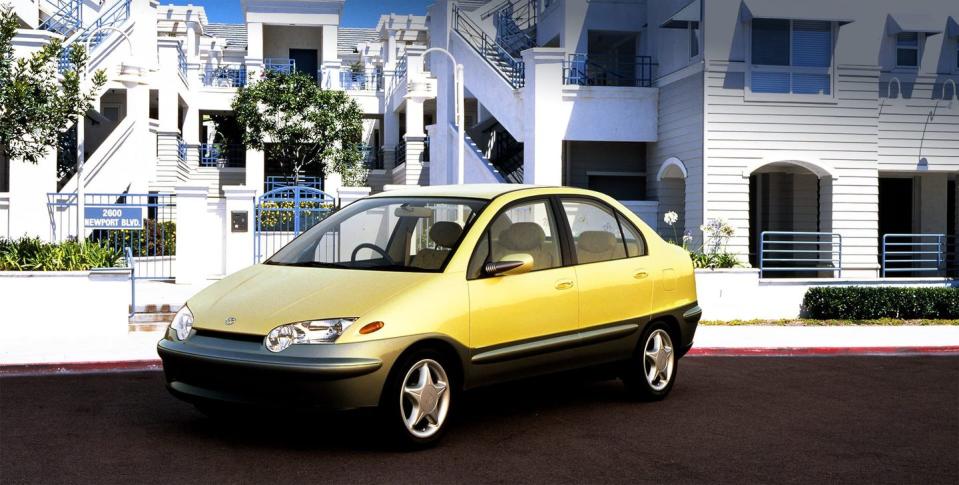How the Toyota Prius Brought Hybrids to the Mainstream

The first hybrid to hit North America was the Honda Insight, a funny little streamlined two-seater that beat the Toyota Prius to market by seven months. It had a manual transmission, was fun to drive in typical Honda fashion, and was rated at 61 mpg, holding the title as the most efficient production gasoline-powered vehicle in North America for a decade and a half. It didn't matter: saleswise, the Prius totally obliterated it.
Toyota's hybrid wasn't a quirky science project; it was a Herculean effort that laid the groundwork for a new kind of powertrain. The oddball Insight was the narrow-application kitchen appliance you use twice a year; the Prius might have had all the personality of a coffeemaker, but it made the coffee right, every morning.
How Hybrid Synergy Drive Works
At the heart of the equation was the way in which Toyota's hybrid system differed from Honda's Integrated Motor Assist. The latter featured an added-on electric motor that sometimes stepped in with added torque for an efficient small-displacement four-cylinder. Toyota's setup was a parallel hybrid, two complete drivetrains blended into one, and it combined elements from sources as varied as the Ford Model T and Japan's Shinkansen bullet trains.

For its gasoline engine, the first-generation Prius used a 1.5-liter inline-four running the efficiency-minded Atkinson cycle. This leaves the intake valve open slightly longer on the compression stroke, which reduces in-cylinder pressure, sacrificing power for efficiency. This engine produced 70 hp and 82 pound-feet of torque.
Making up for this deficit of power was the electric motor. Paired to a 1.78-kWh nickel-metal hydride battery, the AC motor made just 44 hp, but 258 pound-feet of torque. Here, Toyota studied bullet train semiconductors to help manage energy flow between the battery and electric motor. The car was emphatically not fast—Car and Driver tested a 2001 model and clocked a glacial 13.0-second run to 60 mph—but the electric motor provided useful throttle response for stop-and-go traffic.
The connection between a Model T and a Prius is found in the transmission. Like Henry Ford's mass-market success, the Toyota also has a planetary gearbox, which allows for input from either the gasoline engine, the electric motor, or both, as needed. It also allows for the electric motor to provide regenerative braking, turning the potential energy of a Prius in motion back into electricity to be stored in the battery. Early testers expressed bemusement at the way the Prius alternately whirred or went silent as it cruised down the road. But it worked. The original 52-mpg EPA city rating spoke for itself (that number since been revised down to 42 mpg based on updated procedures).
Where the Prius Came From


 Yahoo Autos
Yahoo Autos 